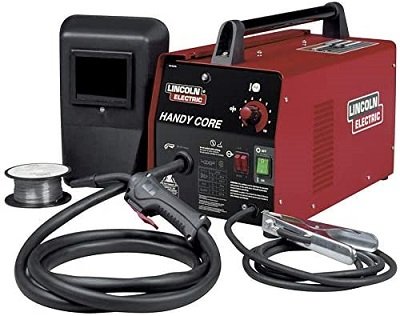Flux core welding uses a continuous wire feed for the base material and a wire-type electrode similar to standard MIG welding. However, unlike standard MIG welding, flux core welders are used without shielding gas.
If you want to select a top flux core welder in your locality, here are a few steps that can help you to choose one.

How is Flux Core Welding Used?
According to reports, the global welding equipment market size was valued at $11.53 billion in 2018. It can grow at a rate of 6.9 percent from 2019 to 2025.
Flux core welding can be used on any metal that has at least 25 percent chromium content. Common metals include carbon steel, stainless steel, cast iron, and alloy steel.
It can also be used on non-ferrous metals like aluminum or brass but with reduced penetration capabilities than MIG welding. The electrodes offer more chipping than solid wires for increased penetration through rusty materials.
What are the Advantages of Using a Flux Core Welder?
The main advantage of flux core welding is cost. Since no shielding gas is required, the initial investment for a flux core welder is much lower than MIG or TIG welders. It’s also much easier to learn and use.
Some models only require you to dial one knob to control both wire feed and voltage output. Others will stop beeping when the set temperature has been reached and start feeding wire automatically as soon as arc starting begins.
Best Flux Core Welders: How to Choose the Top Models for Your Needs
Before buying a top flux core welder, it is essential to consider all aspects of your requirements and shop around carefully.
Duty Cycle
The first feature you want to consider is the machine’s duty cycle. Duty cycle refers to how long it can continuously run before shutting down for a certain amount of time to avoid overheating.
Different welders have different duty cycles, with anything over 30% being considered good.
Wire Feed
Another important consideration is the machine’s wire feed speed. A higher feed speed means less downtime spent changing spool rolls but can increase wear on the machine.
Some machines will stop feeding wire if the user attempts to turn the dial above their maximum wire feed speed.
Voltage Control
Once you know your desired voltage output, choose a model that allows you to control it easily using either a knob or digital controls. These are essential features to look for when choosing a flux core welder.
Pulsing
If at all possible, you want the machine to have the ability to pulse. The pulse feature allows you to remove excess slag and spatter, making cleanup much more manageable. It is not always necessary, but it should be considered if possible.
Duty Cycle Percentage/Measurement
The final thing to consider is how duty cycle percent will be measured. Some machines use apparent power as their measurement while others use real power or true RMS power, so choose a machine that measures its duty cycle in a way that makes sense for your needs.
Wire Feed Speed
Wire feed speed is the average pace at which the wire unwinds from the spool.
Voltage Output
The amount of voltage produced by a welder is measured in Volts (V). It is typically in the range of about 24-300 V. Higher voltages produce hotter welds, while lower voltages produce cooler welds. Flux core welding typically produces welds that are around 18 volts.




